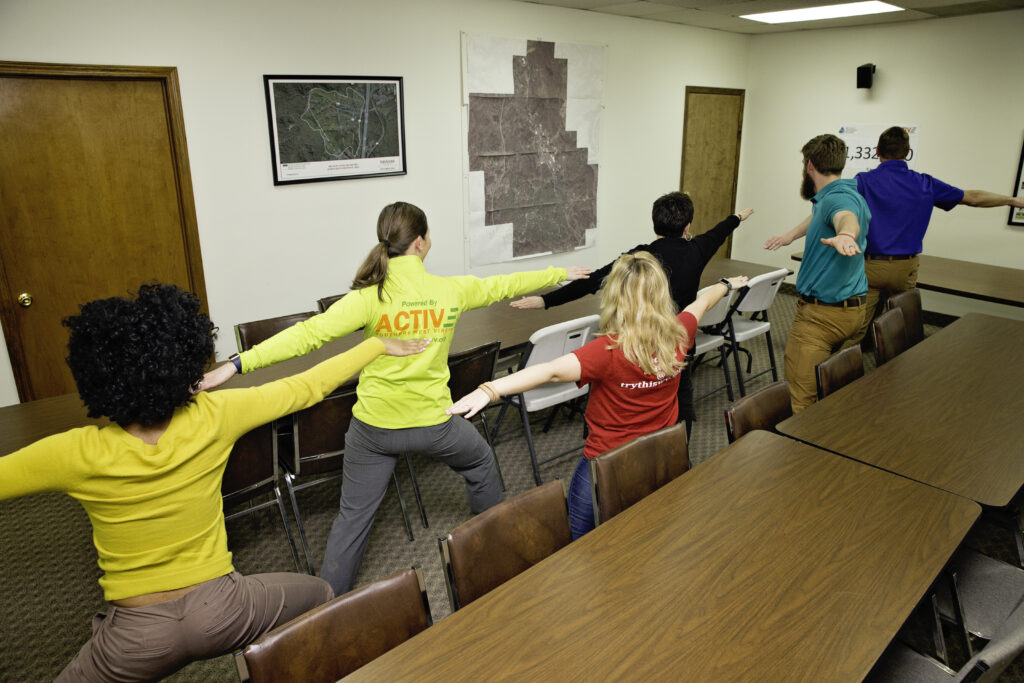
Introduction
Welcome back or welcome to another riveting installment in our Policy, Systems, and Environmental Changes blog series. If you missed our last post, we discussed Policy changes. As a quick recap on the origins of this series, I’m new to my position of Workplace Wellness Director for Active Southern West Virginia and in an effort to re-educate myself to PSE terminology, I’m sharing my learning and understanding of these concepts. This is a four-part blog series where we’ll take a look at each type of change individually, then we’ll bring it all together, hopefully, in an example grant application.
Today we are diving into the world of system changes, which I tend to find the most obscure of the three. A policy is a rule. Check. An environment is your physical location. Check. But system…

System Change
Always start at the beginning. Webster defines system as “a regularly interacting or interdependent group of items forming a unified whole.” Great. Groups that are regularly interacting or not, that form a whole unit.
Crystal clear.
I tend to think of systems as a computer. In very simplistic terms, a computer is made up of hardware and software and the way those two pieces come together creates a specific computer type or brand, which then shapes my expectations and experience.

Your worksite is also a system. It is created of employees and managements and the industry, then throw in everyone’s values, industry standards and norms, the building you work in and SO MANY OTHER FACTORS into the melting pot that is your worksite. This is the system you are seeking to change.
The Rural Health Information Hub defines system change as “a fundamental shift in the way problems are solved.” I can work with that.
As I mentioned last week, the CDC Health ScoreCard and our confidential employee survey collects and assesses potential areas your worksite could improve on and employees’ readiness to change. Two great starting points.
So, the system piece of PSE changes looks at the “problem” area and seeks to create a new way to address them, because if your current system was successfully addressing this issue, then there wouldn’t be an issue. Does that make sense?
If I’m continuously late to staff meetings, then my current means of time management or organizing appointments is obviously not working. I need to create a new system to manage my time and/or organize my appointments.
System Change Examples
Similarly, if a worksite says that workplace wellness is important to them, but they don’t have any policies or a system in place to cultivate wellness, then are they very successful in their commitment to workplace wellness?


Example #1
System changes that support an organization’s commitment to workplace wellness could include:
Creating a wellness committee to encourage wellness at the workplace.
Certifying an employee in Work@Health to facilitate a wellness program.
Jumping back to last week’s blog, we had a worksite where the employees were interested in moving more throughout the day, but stated they didn’t have enough time in their workday and further worried they would get in trouble with management. So, the worksite created a policy to allow for a paid 30-minute lunchbreak and two paid 15-minute breaks, per eight hour shift, which employees could use for physical activity.
So, you’ve passed the policy and communicated the new policy to employees, but now what?
Example #2
To follow-up on that policy, what are some things you could put into place to encourage the new behavior of incorporating more physical activity into your day. Maybe you provide educational opportunities:

Provide monthly Lunch ‘N Learns with key speakers who address different ways to be active in the workplace, reasons why it’s important to be active in the workplace, and benefits to being active in the workplace.

Example #3
Maybe you provide an opportunity to be physical:
Provide an optional employee group lead walk during one or both of the new 15-minute break times.
The point of a system change, in my mind, is to provide support to those who want to change, but may not know how or where to begin. So, we develop plans to implement new interventions. We provide education. We provide opportunities to cultivate the new behavior.
Systems changes can be frustrating because of the three PSE changes, systems are esoteric, at times it feels like a nebulous thing, and there can be systems within systems, so which system are we talking about, which one are we addressing. I get it. To me, Systems are the connective tissue between the policy or written word, and the physical environment. The System bundles all of that together and grabs people with all of our idiosyncrasies and creates a totally unique organism: your worksite.
Key Questions to Ask When Developing a System Change.
- What is the problem or issue we are trying to address/solve?
- What is our current means of addressing/solving said problem or issue?
- What is the outcome we are hoping to achieve?
- What are some steps we can take to achieve our outcome?

Closing
Just remember, systems is where you are changing habits, you are changing beliefs, you are changing the status quo.
It is going to take time. Be patient and have a plan.
Hope you tune in for our next installment in the series: Environmental Changes. Thanks for your time.
Stay Active!

Kelly Fox
Workplace Wellness Director
Active Southern West Virginia

